
The Enchanting Punakha Valley: Bhutan's Hidden Gem
Discover the serene Punakha Valley in Bhutan, where history, culture, and nature converge to offer an unforgettable journey through breathtaking landscapes and spiritual landmarks.
Nestled between the mighty Himalayas, Punakha Valley in Bhutan is a serene and picturesque destination that offers a blend of natural beauty, rich history, and vibrant culture. As the former capital of Bhutan, Punakha is steeped in historical significance and is home to some of the country's most important landmarks, including the majestic Punakha Dzong. This grand fortress, located at the confluence of the Pho Chhu and Mo Chhu rivers, is an architectural marvel and a testament to Bhutanese craftsmanship. The valley is also renowned for its lush landscapes and stunning views. Terraced rice fields, traditional farmhouses, and blooming jacaranda trees create a mesmerizing panorama that changes with the seasons. Visitors can enjoy a leisurely stroll through the valley, taking in the tranquil surroundings and the warm hospitality of the local people. The Khamsum Yulley Namgyal Chorten, a beautifully crafted stupa, offers breathtaking views of the valley and is a must-visit for those seeking peace and spiritual solace. Adventure enthusiasts will find plenty to do in Punakha Valley. From white-water rafting on the Pho Chhu River to exploring hidden trails leading to ancient monasteries, there is no shortage of activities to keep you engaged. The valley also hosts several festivals throughout the year, such as the Punakha Tshechu, where you can witness traditional Bhutanese dances and rituals. Whether you're a history buff, a nature lover, or an adventure seeker, Punakha Valley promises an unforgettable experience.
Local tips in Punakha Valley
- Visit the Punakha Dzong early in the morning or late afternoon to avoid crowds and enjoy the serene atmosphere.
- Wear comfortable walking shoes as the valley has many beautiful trails and paths to explore.
- Check the local festival calendar and plan your visit around the Punakha Tshechu for a unique cultural experience.
- Carry a reusable water bottle to stay hydrated, as the weather can be warm, especially during the summer months.
- Hire a local guide to gain deeper insights into the history and culture of Punakha Valley.
The Enchanting Punakha Valley: Bhutan's Hidden Gem
Nestled between the mighty Himalayas, Punakha Valley in Bhutan is a serene and picturesque destination that offers a blend of natural beauty, rich history, and vibrant culture. As the former capital of Bhutan, Punakha is steeped in historical significance and is home to some of the country's most important landmarks, including the majestic Punakha Dzong. This grand fortress, located at the confluence of the Pho Chhu and Mo Chhu rivers, is an architectural marvel and a testament to Bhutanese craftsmanship. The valley is also renowned for its lush landscapes and stunning views. Terraced rice fields, traditional farmhouses, and blooming jacaranda trees create a mesmerizing panorama that changes with the seasons. Visitors can enjoy a leisurely stroll through the valley, taking in the tranquil surroundings and the warm hospitality of the local people. The Khamsum Yulley Namgyal Chorten, a beautifully crafted stupa, offers breathtaking views of the valley and is a must-visit for those seeking peace and spiritual solace. Adventure enthusiasts will find plenty to do in Punakha Valley. From white-water rafting on the Pho Chhu River to exploring hidden trails leading to ancient monasteries, there is no shortage of activities to keep you engaged. The valley also hosts several festivals throughout the year, such as the Punakha Tshechu, where you can witness traditional Bhutanese dances and rituals. Whether you're a history buff, a nature lover, or an adventure seeker, Punakha Valley promises an unforgettable experience.
When is the best time to go to Punakha Valley?
Iconic landmarks you can’t miss
Punakha Dzong སྤུ་ན་ཁ་རྫོང་།
Explore Punakha Dzong, a stunning fortress monastery in Bhutan showcasing rich history, exquisite architecture, and breathtaking landscapes.
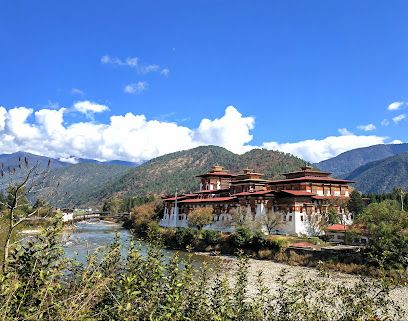
Punakha Suspension Bridge
Experience breathtaking views and unique adventures at Bhutan's longest suspension bridge, a must-visit attraction in Punakha Valley.
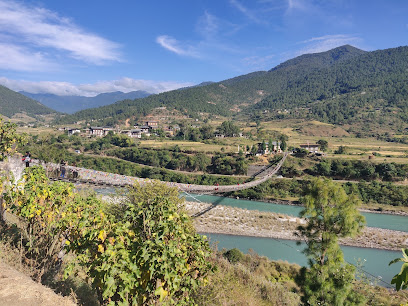
Chimi Lhakhang
Discover the spiritual haven of Chimi Lhakhang, Bhutan's Fertility Temple, where ancient traditions meet breathtaking natural beauty.
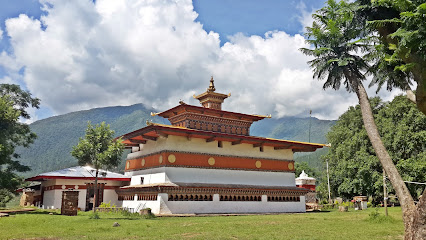
Khamsum Yulley Namgyal Choeten
Explore the tranquil beauty and spiritual significance of Khamsum Yulley Namgyal Choeten in Bhutan, a must-visit stupa offering breathtaking views.
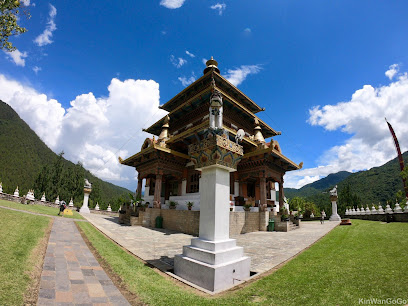
Riverfront Punakha
Discover the tranquil beauty of Riverfront Punakha, where nature and culture intertwine in the heart of Bhutan's picturesque valley.
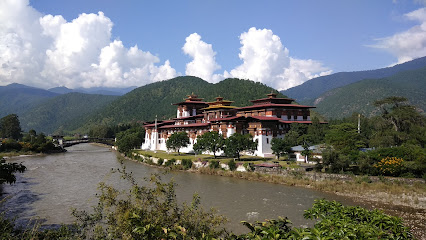
Kabji-Hoka Tsho
Experience the tranquility and stunning views at Kabji-Hoka Tsho, one of Bhutan's largest mid-altitude lakes, nestled in the beautiful Mendrelgang.
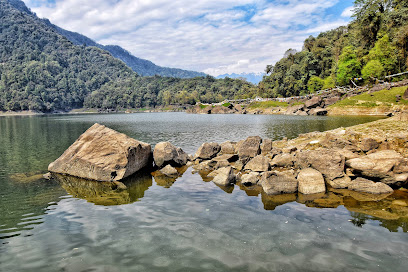
Talo Goenpa
Discover the tranquility of Talo Goenpa, a breathtaking monastery in Punakha, Bhutan, showcasing rich culture and stunning natural landscapes.
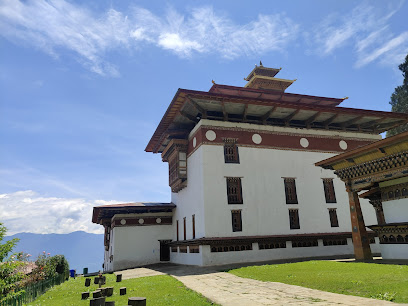
Pho chhu
Discover the breathtaking Pho Chhu Suspension Bridge in Punakha, a must-visit destination for stunning views and unforgettable experiences.

Unmissable attractions to see
Buddha Dordenma Statue སྟོན་པ་རྡོར་གདན་མ།
Discover the grandeur of the Buddha Dordenma Statue, a monumental symbol of peace and spirituality in the heart of Thimphu, Bhutan.
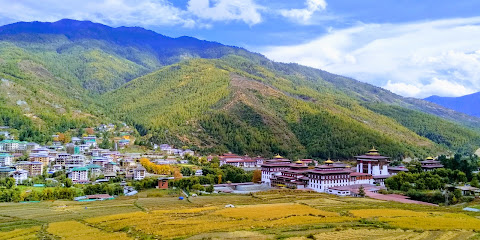
National Memorial Chhorten རྒྱལ་ཡོངས་རྗེས་དྲན་མཆོད་རྟེན།
Explore the National Memorial Chhorten, a majestic Buddhist stupa in Thimphu, symbolizing peace and spirituality amidst Bhutan's rich culture.
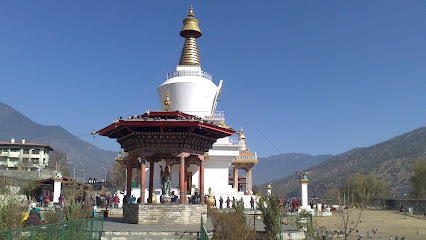
Punakha Suspension Bridge
Discover the breathtaking views and rich culture at the Punakha Suspension Bridge, Bhutan's longest suspension bridge, a must-visit attraction.
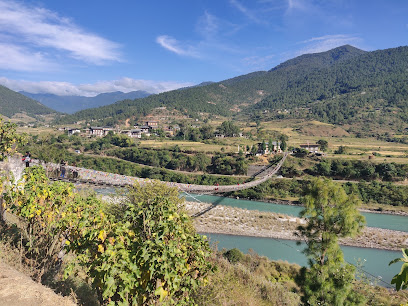
Royal Takin Preserve
Explore the Royal Takin Preserve, Bhutan's enchanting nature haven, where the national animal thrives amidst stunning landscapes and rich biodiversity.
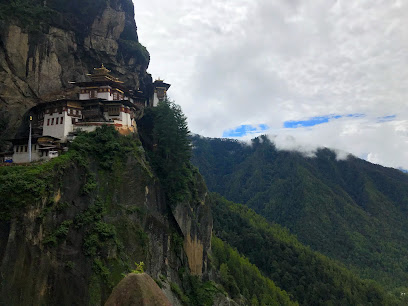
Simply Bhutan
Explore the cultural heritage of Bhutan at Simply Bhutan, a vibrant museum showcasing the traditions, art, and lifestyle of this enchanting kingdom.
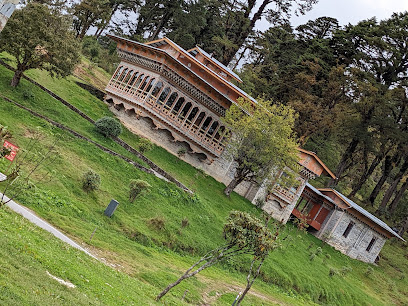
Folk Heritage Museum Kawajangsa
Explore Bhutan's rural heritage at the Folk Heritage Museum Kawajangsa - a captivating showcase of culture and tradition in Thimphu.
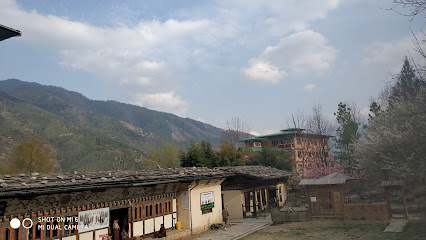
Simtokha Dzong སེམས་རྟོགས་ཁ་རྫོང་།
Experience the timeless beauty and spiritual significance of Simtokha Dzong, an architectural gem nestled in the hills of Bhutan.
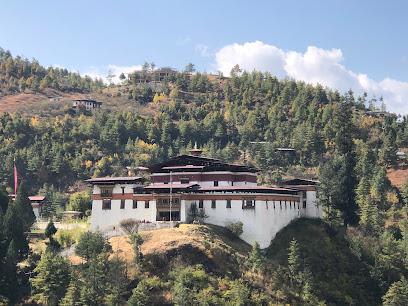
Simtokha Dzong སེམས་རྟོགས་ཁ་རྫོང་།
Explore the historic Simtokha Dzong, a stunning fortress showcasing Bhutanese architecture and rich cultural heritage amidst breathtaking mountain views.
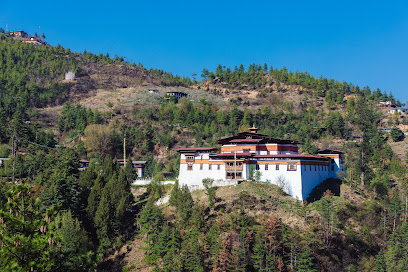
Phobjikha Valley
Explore the breathtaking Phobjikha Valley, home to stunning landscapes, rich biodiversity, and the enchanting black-necked cranes in Bhutan.
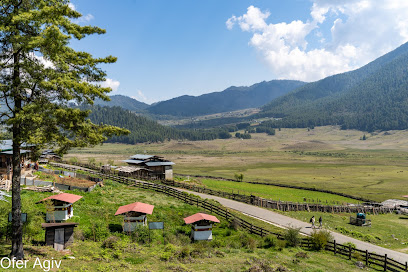
Kyichu Lhakhang སྐྱིད་ཆུ་ལྷ་ཁང་།
Discover the ancient wonders of Kyichu Lhakhang, a historic Buddhist temple that embodies the spiritual essence of Bhutan in the serene Paro Valley.
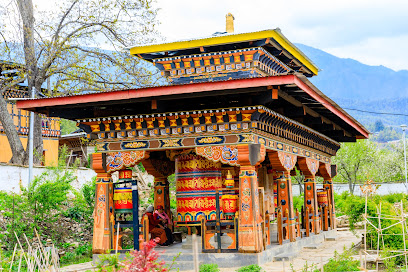
Chimi Lhakhang
Chimi Lhakhang in Bhutan is a captivating Buddhist temple celebrated for its unique fertility blessings and stunning natural beauty.

Jigme Dorji National Park
Discover the breathtaking beauty of Jigme Dorji National Park, Bhutan's premier destination for adventure and wildlife enthusiasts.
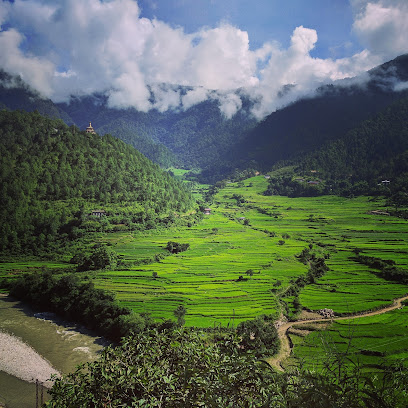
Khamsum Yulley Namgyal Choeten
Experience the tranquility and breathtaking views at Khamsum Yulley Namgyal Choeten, a stunning Buddhist stupa on the Thimphu-Punakha Highway.
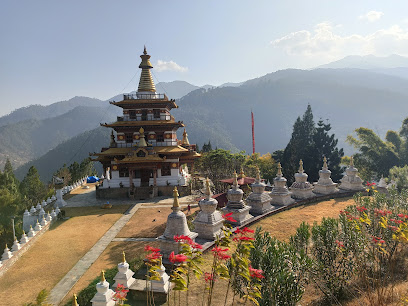
Drukgyel Dzong འབྲུག་རྒྱལ་རྫོང་།
Explore the historic Drukgyel Dzong, a cultural landmark in Bhutan's Paro Valley, showcasing stunning architecture and breathtaking mountain views.
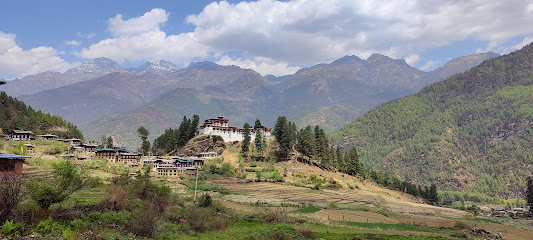
Sangaygang View Point
Discover breathtaking views and serene nature at Sangaygang View Point, a must-visit tourist attraction in Bhutan's stunning landscape.
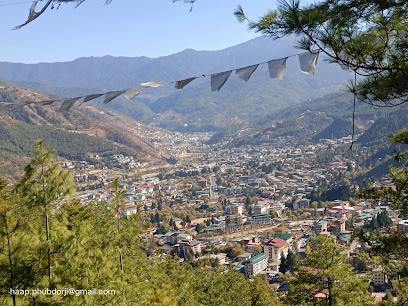
Essential places to dine
Damchen Resort
Discover tranquility and luxury at Damchen Resort in Khuruthang, Bhutan—your gateway to nature's beauty and rich culture.

Zhingkham Resort ཞིང་ཁམས་སྐྱིད་གནས།
Experience authentic Bhutanese hospitality at Zhingkham Resort in Punakha – a serene retreat surrounded by breathtaking natural beauty.

Hotel Lobesa
Discover tranquility and cultural richness at Hotel Lobesa in Punakha, Bhutan - your gateway to breathtaking landscapes and warm hospitality.

RKPO GREEN RESORT
Discover serenity at RKPO Green Resort - your perfect getaway in Punakha surrounded by breathtaking Himalayan views.

Punakha Residency
Discover serenity and authentic Bhutanese hospitality at Punakha Residency, your gateway to exploring Khuruthang's natural beauty.

Meri Puensum Resort
Experience breathtaking views and serene hospitality at Meri Puensum Resort in Punakha, Bhutan – your tranquil escape amidst nature's splendor.

Dhensa Boutique Resort
Discover serenity at Dhensa Boutique Resort in Punakha - a perfect blend of luxury, nature, and culture.

Punakha Dragon Nest Resort
Discover tranquility at Punakha Dragon Nest Resort, your serene retreat in Wangdue Phodrang amidst breathtaking landscapes and rich cultural heritage.

Drubchhu Resort
Discover serenity at Drubchhu Resort – your tranquil retreat in the heart of Bhutan's stunning landscapes.

MERENGMA' Bistro
Experience the best of Bhutanese cuisine at MERENGMA' Bistro in Khuruthang—where local flavors meet modern dining.
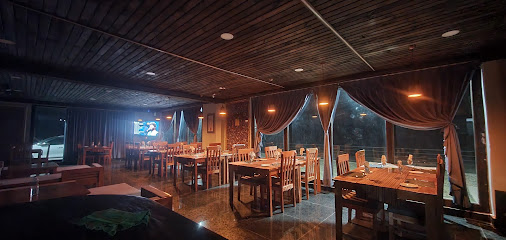
Dhumra Farm Resort
Experience tranquility at Dhumra Farm Resort in Bhutan—where luxury meets nature amidst breathtaking landscapes.

Rinchenling Cafeteria
Discover authentic Bhutanese flavors at Rinchenling Cafeteria in Thimphu - a culinary gem offering traditional dishes in a cozy setting.
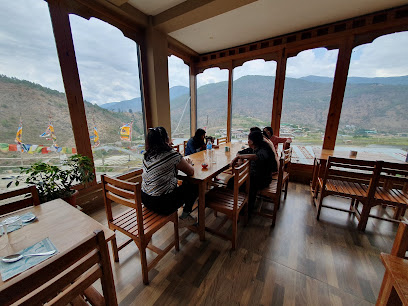
COMO Uma Punakha
Discover luxury amidst nature at COMO Uma Punakha – a premier resort hotel offering breathtaking views and cultural experiences in Bhutan.
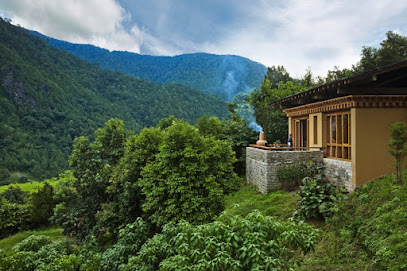
Chh'a Bistro and Bar
Experience exquisite Bhutanese dining at Chh'a Bistro and Bar in Thimphu - where tradition meets modern culinary artistry.
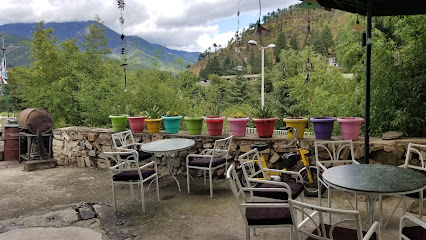
K. B RESTAURANT (Thali Special)
Experience authentic Bhutanese cuisine at K. B Restaurant with their famous Thali specials in Wangdue Phodrang.

Markets, malls and hidden boutiques
Punakha Suspension Bridge
Experience breathtaking views and adventure at the Punakha Suspension Bridge, Bhutan's iconic marvel spanning the Mo Chhu River.
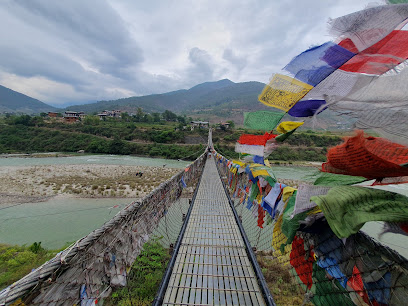
Punakha Dzong སྤུ་ན་ཁ་རྫོང་།
Experience the breathtaking beauty and rich history of Punakha Dzong, a stunning fortress-monastery in Bhutan that captivates every traveler.
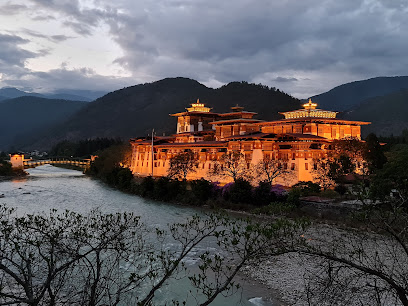
Centenary Farmers Market
Explore the Centenary Farmers Market in Thimphu, where local produce and vibrant culture come alive in a unique shopping experience.
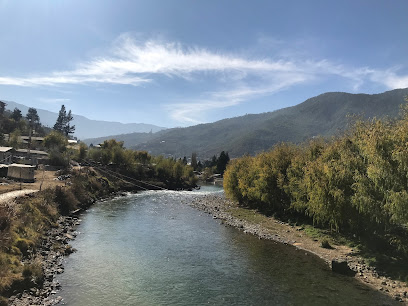
Chimi Lhakhang
Explore the enchanting Chimi Lhakhang, a sacred temple in Bhutan dedicated to the Divine Madman, rich in culture and spiritual significance.
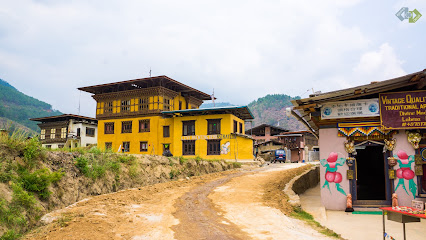
Khamsum Yulley Namgyal Choeten
Discover the serene beauty and cultural richness of Khamsum Yulley Namgyal Choeten, a breathtaking stupa offering panoramic views of the Punakha Valley.
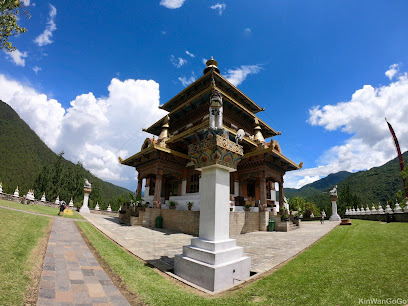
Paro Town Shop No.12.Empty space for rent
Discover the charm of Paro Town, where vibrant shopping meets rich Bhutanese culture amidst stunning Himalayan landscapes.
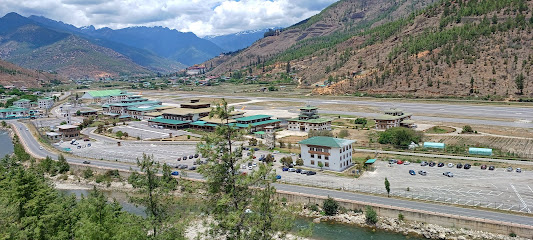
KOJA BHUTAN
Explore KOJA BHUTAN in Thimphu for unique gifts that reflect Bhutan's rich culture and craftsmanship, making your travels unforgettable.
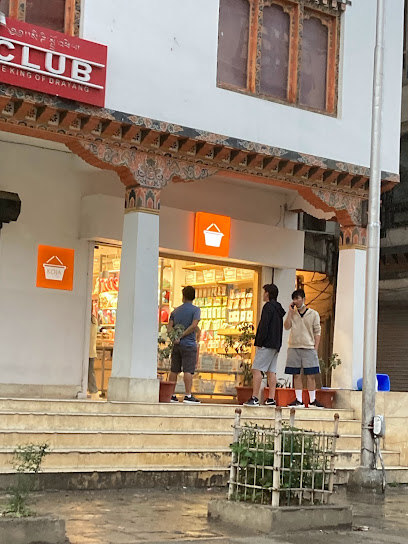
National Handicraft Emporium
Discover authentic Bhutanese craftsmanship at the National Handicraft Emporium, showcasing unique handicrafts and cultural treasures.

Junction Bookstore
Explore Junction Bookstore in Thimphu, a serene literary haven brimming with local and international titles, perfect for every book lover.
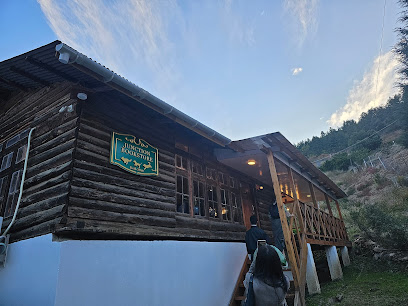
Shearee Square
Discover the vibrant shopping scene at Shearee Square, Thimphu's premier mall for unique local crafts and international delights.
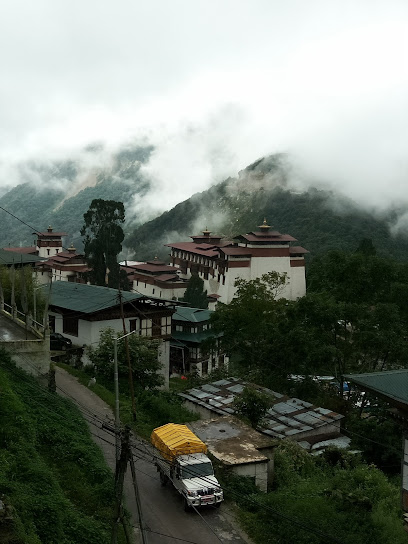
Azha Pasa
Explore Azha Pasa in Thimphu for an unforgettable shopping experience, blending traditional craftsmanship with modern retail.
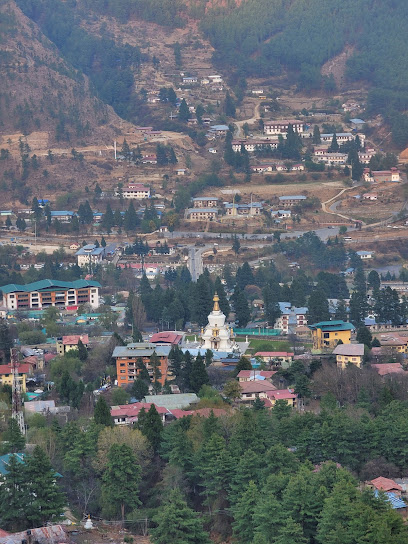
Dry Agro production
Discover the essence of Bhutan with exquisite dried fruits at Dry Agro Production in Mongar, where culture meets flavor in every bite.
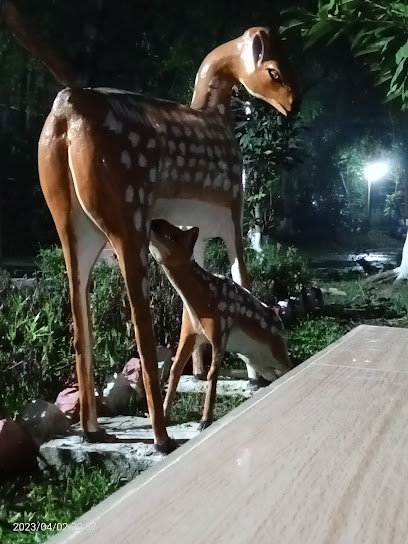
8 Eleven
Explore local culture and find unique souvenirs at 8 Eleven, Thimphu's beloved general store, offering a delightful mix of products and friendly service.
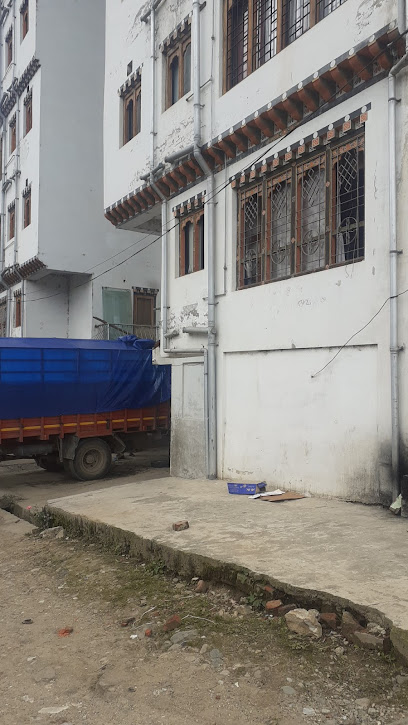
Heavenly Bhutan Traders
Explore high-quality tiles, granite, and marble at Heavenly Bhutan Traders in Thimphu, the ultimate destination for home improvement enthusiasts.

Changlam Corner
Experience the heart of Thimphu at Changlam Corner, where local crafts meet modern shopping in a vibrant atmosphere.
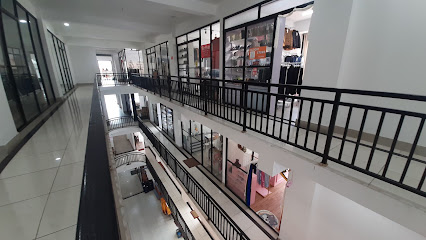
Essential bars & hidden hideouts
Punakha Suspension Bridge
Explore the breathtaking Punakha Suspension Bridge, Bhutan's longest bridge, offering stunning views and a unique cultural experience in the heart of nature.
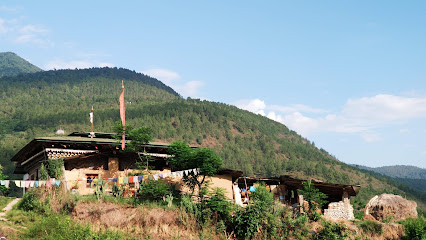
Mojo Park
Discover Mojo Park in Thimphu – a lively restaurant and bar offering delicious food, local brews, and vibrant live music for an unforgettable night out.
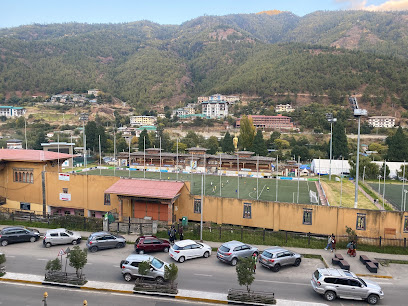
The Zone
Experience the vibrant culinary fusion of Bhutanese and American cuisine at The Zone, a top-rated restaurant in the heart of Thimphu.
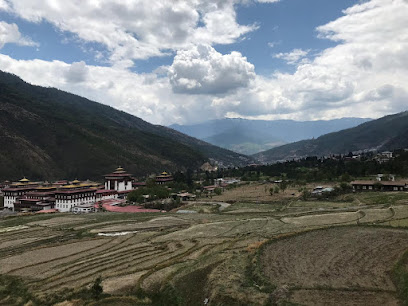
MERENGMA' Bistro & Bar
Discover the flavors of Bhutan at MERENGMA' Bistro & Bar, a cozy spot in Khuruthang offering a delightful culinary experience.
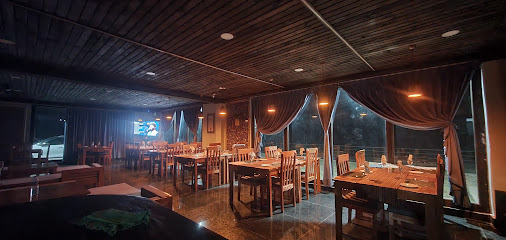
Rinchenling Cafeteria
Discover the flavors of Bhutan at Rinchenling Cafeteria in Thimphu, where traditional dishes meet a welcoming atmosphere.
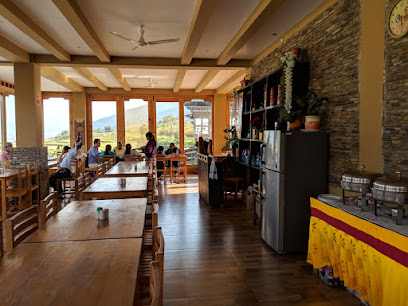
K. B RESTAURANT (Thali Special)
Discover the authentic taste of Bhutan at K. B Restaurant in Wangdue Phodrang, renowned for its delicious Thali specials and welcoming atmosphere.

Hotel Chicken Dinner
Experience the best of Bhutanese cuisine and hospitality at Hotel Chicken Dinner in Khuruthang, where every meal is a memorable journey.
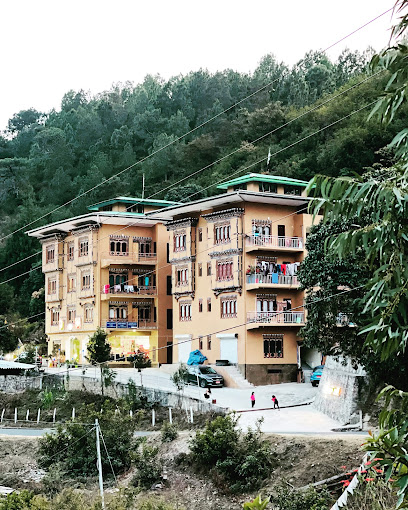
Raven Restaurant
Savor the essence of Bhutan with authentic flavors at Raven Restaurant in Khuruthang, a culinary experience not to be missed.
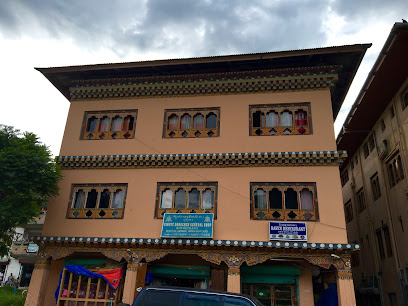
Vintage Cafe
Experience the perfect blend of vintage charm and culinary delights at Vintage Cafe in Punakha, a must-visit for all travelers.
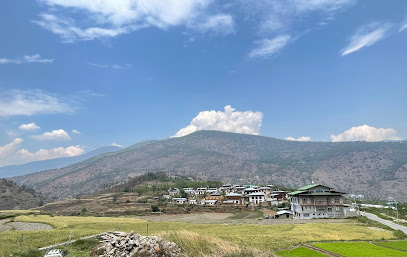
Om Pub
Discover the lively nightlife of Thimphu at Om Pub, where local culture meets vibrant entertainment in a welcoming atmosphere.
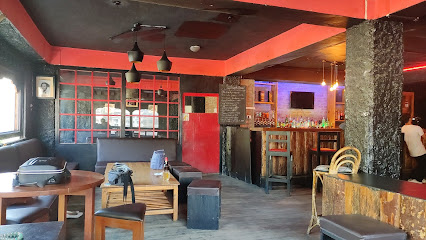
The Outcast Pub
Discover the breathtaking views and local charm at The Outcast Pub, a must-visit bar in Paro, Bhutan.
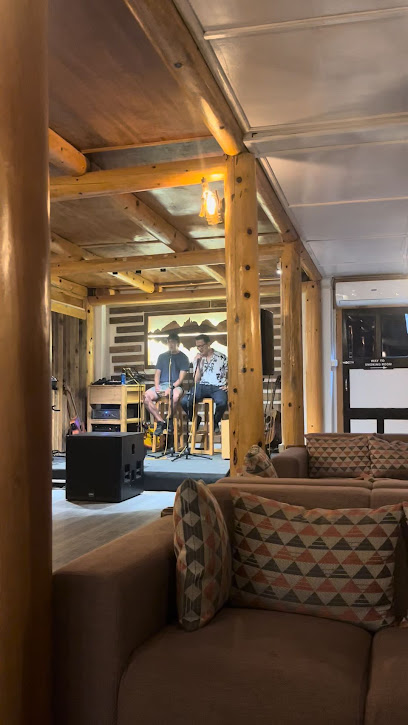
Chimi Lhakhang Organic Cafe
Discover the flavors of Bhutan at Chimi Lhakhang Organic Cafe, where organic ingredients meet traditional cuisine in a serene setting.
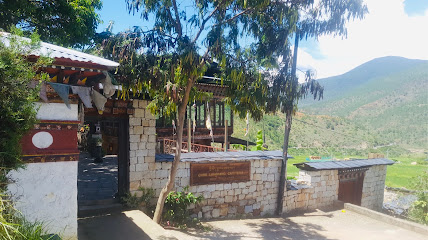
Druk Star Karaoke Bar
Experience vibrant nightlife and live music at Druk Star Karaoke Bar in Thimphu, where every night is an invitation to sing and celebrate.
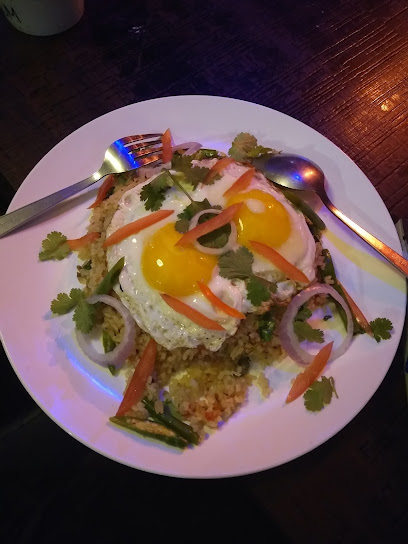
DAZA Restaurant & BAR
Discover the best of Bhutanese and international cuisine at DAZA Restaurant & BAR in Punakha, where every meal is a memorable experience.
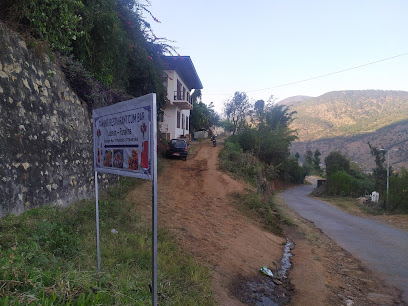
Punakha
Experience the enchanting blend of culture and relaxation in Punakha's vibrant bar scene, set against breathtaking Himalayan landscapes.

Local Phrases about Punakha Valley
-
- Helloཇ་བ་ལུག
[ja bu lu] - Goodbyeསེམས་ཡ་པ
[sem ya pa] - Yesཡིན
[yin] - Noམིན
[min] - Please/You're welcomeམེད་པ
[me pa] - Thank youགཏམ་རེག
[tam rek] - Excuse me/Sorryའགྲིལ་བ
[dril ba] - How are you?ཁྱེད་ར་ལ་སེལ
[kye ra la sel] - Fine. And you?ཞུ་དགས་གཅིག་པ་གཏེར
[zhu gak chik pa ter] - Do you speak English?ཡིན་རེགས་བཤད་ཕར་ཡོད
[yin rek sha par yod] - I don't understandཁྱེད་ལ་མེད་པ
[kye la me pa]
- Helloཇ་བ་ལུག
-
- I'd like to see the menu, pleaseམིག་གིས་འགྲོ་ཁ་འགོག་སེམས་པ
[mik gi dro kha gok sem pa] - I don't eat meatབྱེད་སེམས་མིག་མི
[bye sem mik mi] - Cheers!ཐོ་གྲང
[tho drang] - I would like to pay, pleaseབདུནའང
[dun ang]
- I'd like to see the menu, pleaseམིག་གིས་འགྲོ་ཁ་འགོག་སེམས་པ
-
- Help!གཏིའང
[ti ang] - Go away!བྱིའང
[byi ang] - Call the Police!ལྷགཡའང
[lhak ya ang] - Call a doctor!ལས་ཨོའང
[la o ang] - I'm lostཧོའང
[ho ang] - I'm illདལའོའང
[da lao ang]
- Help!གཏིའང
-
- I'd like to buy...མིག་གིས་ཕརའང
[mik gi par ang] - I'm just lookingམིག་གིས་འགྲོ་ཁ་ཁ
[mik gi dro kha kha] - How much is it?འདའ་རེན་བའང
[da ren ang] - That's too expensiveདེ་འཇུག་གཏིའང
[de juk ti ang] - Can you lower the price?འདའ་ལོར་བའང
[da lor ang]
- I'd like to buy...མིག་གིས་ཕརའང
-
- What time is it?ཁྱེད་ནའེ་བའང
[kye nae ang] - It's one o'clockམཁས་ཡའ
[kha ya] - Half past (10)སེམས་དཀུ
[sem ku] - Morningཉིན་མོང
[nyin mong] - Afternoonཉིང་སྔོའང
[ning ngo ang] - Eveningརང་མར
[rang mar] - Yesterdayཁ་སོའང
[kha so ang] - Todayནའེ
[nae] - Tomorrowསྤས་རའང
[pa ra ang] - 1གཉིས
[nyi] - 2གཉི
[nyi] - 3གཉིག
[nyik] - 4བཉིའ
[nyi] - 5ལྷཉིས
[lhay nyi] - 6དཁཉིས
[kha nyi] - 7ཛཉིས
[za nyi] - 8ཧོཉིས
[ho nyi] - 9ཀོཉིས
[ko nyi] - 10བཉི
[nyi]
- What time is it?ཁྱེད་ནའེ་བའང
-
- Where's a/the...?མྱུལ་དའ་ང
[jul da ang] - What's the address?ཆའ་ནུས་ང
[cha nus ang] - Can you show me (on the map)?སེམས་བའང
[sem ang] - When's the next (bus)?སྤས་ང
[pa ang] - A ticket (to ....)དཀའ་ང
[ka ang]
- Where's a/the...?མྱུལ་དའ་ང
History of Punakha Valley
-
Punakha Dzong, also known as Pungthang Dewa chhenbi Phodrang (The Palace of Great Happiness), was constructed in 1637–1638 by Ngawang Namgyal, the 1st Zhabdrung Rinpoche. This majestic fortress-monastery is strategically located at the confluence of the Pho Chhu (father) and Mo Chhu (mother) rivers. The dzong served as the administrative center and the seat of the Bhutanese government until the mid-1950s.
-
In 1639, Punakha Dzong witnessed a significant historical event known as the Battle of Punakha. Tibetan forces invaded Bhutan, attempting to seize control of the newly unified kingdom. Under the leadership of Zhabdrung Ngawang Namgyal, Bhutanese forces successfully defended the dzong, securing Bhutan's sovereignty and solidifying the dzong's importance as a defensive stronghold.
-
In 1907, Punakha Dzong became the site of a landmark event in Bhutanese history—the coronation of Ugyen Wangchuck as the first King of Bhutan. This momentous occasion marked the beginning of the Wangchuck dynasty, which continues to reign to this day. The coronation ceremony was held in the Machhen Lhakhang, a revered temple housing the embalmed body of Zhabdrung Ngawang Namgyal.
-
Punakha Dzong suffered extensive damage in 1986 due to a catastrophic fire that destroyed many of its ancient artifacts and structures. The Bhutanese government and the local community undertook extensive restoration efforts to preserve the dzong's historical and cultural significance. The restoration was completed with great care, ensuring that the dzong regained its former glory.
-
Punakha Valley is renowned for its vibrant and colorful festivals, particularly the Punakha Drubchen and Tshechu. The Punakha Drubchen, held in February or March, commemorates the victory over Tibetan invaders with dramatic reenactments of the battle. The Punakha Tshechu, held immediately afterward, is a religious festival featuring masked dances and rituals that celebrate Bhutanese culture and spirituality.
-
In October 1994, Punakha Valley experienced a catastrophic flood when a glacial lake burst its banks, causing the Pho Chhu river to overflow. The flood caused significant damage to the Punakha Dzong and surrounding areas. Following the disaster, concerted efforts were made to repair and reinforce the dzong, ensuring its resilience against future natural calamities.
-
Punakha Dzong was the chosen venue for the royal wedding of King Jigme Khesar Namgyel Wangchuck and Queen Jetsun Pema in October 2011. The ceremony was a grand celebration of Bhutanese culture and tradition, attracting international attention and bringing the spotlight to Punakha Valley's rich heritage. The event highlighted the dzong's enduring significance as a symbol of national unity and cultural identity.
Punakha Valley Essentials
-
Punakha Valley is located in the western part of Bhutan. The nearest international airport is Paro International Airport, approximately 120 kilometers away. From Paro, you can travel to Punakha by car or taxi, which typically takes around 3 to 4 hours, depending on road conditions. Alternatively, you can take a bus from Thimphu, the capital city, to Punakha. The journey offers scenic views of the Bhutanese countryside and requires about 3 hours.
-
In Punakha Valley, local taxis and rental cars are the most convenient options for getting around. While public buses are available, they may not be as frequent or reliable. Renting a car with a driver is a popular choice for tourists who wish to explore the valley at their own pace. Biking is also an option for the more adventurous travelers, providing a unique way to experience the stunning landscapes.
-
The official currency in Bhutan is the Bhutanese Ngultrum (BTN). Credit cards are accepted in some hotels and larger establishments, but it is advisable to carry cash, especially when visiting smaller shops or rural areas. ATMs are available in Punakha, but it is wise to withdraw sufficient cash in Thimphu or Paro before traveling to ensure you have enough funds.
-
Punakha Valley is generally considered a safe destination for tourists. However, it is always advisable to take standard precautions. Avoid walking alone at night in unfamiliar areas and keep an eye on your belongings in crowded places. There are no specific high-crime areas targeting tourists, but staying vigilant and aware of your surroundings is recommended.
-
In case of emergency, dial 113 for medical emergencies and 110 for police assistance. The local hospital in Punakha provides basic medical services. It is highly recommended to have travel insurance that covers medical emergencies. For minor health issues, there are pharmacies in the valley where you can purchase over-the-counter medications.
-
Fashion: Do dress modestly, especially when visiting religious sites. Avoid wearing revealing clothing. Religion: Do respect local customs and traditions. Always remove your shoes and cover your head when entering dzongs (fortresses) and monasteries. Public Transport: Do be respectful and give up your seat to elderly passengers. Don’t eat or drink on public transport. Greetings: Do greet people with a slight bow and the traditional greeting 'Kuzuzangpo La'. Eating & Drinking: Do try local delicacies and accept food offerings graciously. Don’t refuse hospitality, as it is considered impolite.
-
To experience Punakha Valley like a local, visit the local markets where you can buy fresh produce and traditional Bhutanese goods. Engage with locals, as they are often friendly and willing to share stories about the valley's history and culture. Don't miss visiting the Punakha Dzong, one of the most beautiful and significant dzongs in Bhutan. For a unique experience, take a walk across the Punakha Suspension Bridge, offering stunning views of the valley and the Pho Chhu River.
Nearby Cities to Punakha Valley
-
Things To Do in Wangdue Phodrang
-
Things To Do in Thimphu
-
Things To Do in Paro
-
Things To Do in Trongsa
-
Things To Do in Bumthang
-
Things To Do in Jakar
-
Things To Do in Phuentsholing
-
Things To Do in Gangtok
-
Things To Do in Mongar
-
Things To Do in Trashigang
-
Things To Do in Darjeeling
-
Things To Do in Siliguri
-
Things To Do in Rangpur
-
Things To Do in Guwahati
-
Things To Do in Shillong











